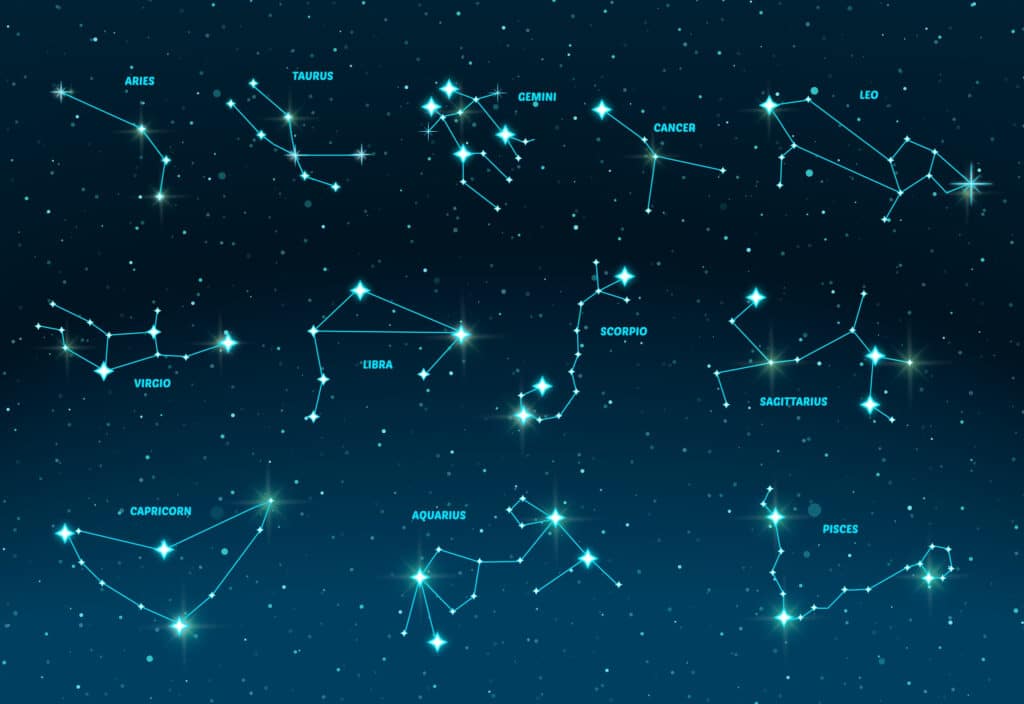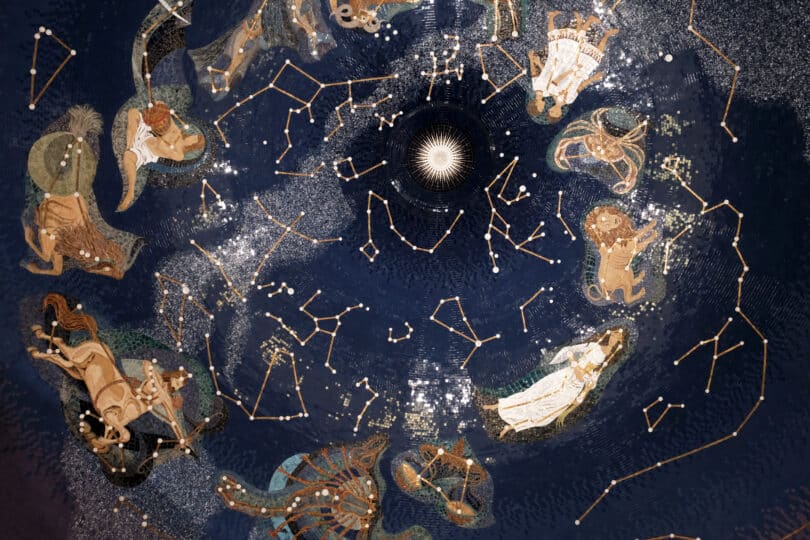Since the dawn of time, humans have been drawn to the beauty and mystery of outer space. This inexplicable fascination is deeply engrained in cultures across the globe. Various paintings, poems, photographs, and other works of art emphasize the heavens at night. And not only that, but the night sky has been a boundless source of information to help humans better understand both, space and the inner workings of the world around us, here on planet Earth.
The study of celestial objects is known as astronomy, and it’s one of the oldest natural sciences that still exists to this day. I’ve always been mesmerized by the stars, and it always amazed me how ancient astronomers were able to connect what’s going on outside of our atmosphere, to so many important things on earth such as agriculture, time and dating, navigation, architecture, and the list goes on.
Let’s take a universal deep dive as we learn more about the galaxies and some of the most prominent and recognizable constellations in the night sky.
What is astronomy?
Astronomy is one of the oldest natural sciences. Generally speaking, astronomy uses physics, chemistry, and mathematics to explore everything that originates beyond the Earth’s atmosphere. The research is centered around celestial objects such as planets, stars, moons, nebulae, galaxies, meteoroids, asteroids, and comets; as well relevant phenomena including supernova explosions, gamma ray bursts, quasars, blazars, pulsars, and cosmic microwave background radiation.

Being one of the oldest sciences, some of the earliest civilizations in the world were looking for solutions and answers in the night sky. Ancient Sumerians, Babylonians, Egyptians, Greeks, Indians, Chinese, Mayans, and many indigenous people in the Americas all developed methods to study the stars – and they harnessed their research in the making of calendars, for navigation, agriculture, to tell time, and storytelling. Astronomy played a major role in the creation of many ancient civilizations.
Modern, professional astronomy is split into two categories: observational and theoretical. The former focuses on acquiring and analyzing data made by observing celestial objects, and the latter is geared toward the development of analytical models to describe existing and potential phenomena, by using data and computers.
The galaxies
A galaxy is a system of stars, stellar remnants, dust, interstellar gas, and dark matter, all held together by gravity. The word “galaxy” is derived the Greek term galaxias (γαλαξίας), literally ‘milky’, which is an obvious reference to what we know as the Milky Way galaxy. In 1610, Italian astronomer Galileo Galilei studied the Milky Way, which houses our entire solar system, and found that it also contains a huge number of faint stars.
Modern astronomers estimate that there could be as many as two trillion galaxies in the universe, although only around 34,000 are currently catalogued, and even less have names, such as the Andromeda Galaxy, the Magellanic Clouds, the Whirlpool Galaxy, and the Sombrero Galaxy. Each galaxy averages around 100 million stars that range in size from dwarfs to supergiants, and each galaxy has its own center of mass around which everything orbits.
You can see a few different galaxies from earth without using a telescope; and if it’s dark enough, with just the naked eye. In the Southern hemisphere, both the large and small Magellanic Clouds are visible without a telescope. And in the Northern Hemisphere, the Andromeda Galaxy, also known as M31, graces the winter night sky.
Because it’s so far (2.537 million light years away), Andromeda only appears in a small light smudge in the sky near the milky way. It can only be seen in areas where the sky is a level 1 or 2 on the bortle scale, which is used to rate the level of light pollution in an area.
The constellations

When people think of astronomy, they often think of constellations first. Stars are bright, beautiful, astronomical puzzles that bring life to an otherwise bleak night sky. A constellation is a group of visible stars that form a perceived pattern or formation. For thousands of years, people have found constellations in the sky and used them to tell stories of their creation, future, and beliefs.
Some constellations are internationally recognized, but different cultures and countries may have their own variations – for example, in some countries, Scorpius is viewed as a swan or leaning coconut tree. Some constellations were once popular but eventually faded into obscurity, although even those that have stood the test of time and distance have changed over the years, mostly in shape and size.
Constellations also bring to mind astrology and the zodiac. Whereas astronomy is a recognized natural science, astrology is a type of pseudoscience that encompasses a range of divinatory practices. It uses the shape and positions of celestial objects to determine personality traits and other information about the human psyche. Twelve (or thirteen as of recently) ancient constellations comprise the modern-day/Western zodiac, although again, different cultures may follow different zodiacs.
Orion
Orion is one of the most prominent and recognizable constellations that can be seen from anywhere in world, and it’s bright enough to be viewed without any visual aids and in fairly light-polluted skies. The constellation is made up of bright blue giant and supergiant stars and includes the three larger stars in the constellation: Alnilam, Mintaka, and Alnitak. Betelgeuse, the second-brightest star in Orion, serves as his right shoulder, and Bellatrix marks his left shoulder.
Orion is named after Orion the hunter, son of Poseidon, in Greek mythology. As one of the legends goes, Orion was a supernaturally gifted hunter who claimed to be the greatest in the world. This enraged Zeus’ wife Hera, who was a lover of wildlife (she was known as the “Mistress of Animals” and had many species she protected).
Hera sent a giant scorpion to kill Orion, and the animals was raised to the heavens (placed in the sky) to honor its victory. Out of pity, Zeus put Orion in the sky as well, but he is never visible at the same time as the scorpion. In another myth, Orion claimed to be a better hunter than Artemis, and so his twin brother Apollo sent a scorpion to attack him.
In the night sky, Orion is positioned in a fight against Taurus the bull. In the Northern Hemisphere, Orion is a signal of oncoming winter and is seen in the southwestern sky from November to March. In the Southern Hemisphere, Orion makes its appearance in the northwestern sky during the summer months.
Scorpius
Another easily identifiable constellation is Scorpius. Made up of brilliant, bright stars, one can easily make out some type of shape with little imagination. It looks like the curved body of a scorpion, with two very closely positioned stars at the end making up the stinger. At the scorpion’s heart you’ll see Antares, which is a “supergiant” star, about 680 times larger than the sun.
Again, in Greek mythology the Scorpion is very closely tied to Orion, and even though there are a few different renderings of the myth, the killing of Orion is why the Scorpius was placed in the sky. And if you go out about 1.5 hours before the sun comes up in early spring, you’ll catch Orion going down over the horizon right before Scorpius and the Milky Way rise, which is interesting as the scorpion kills Orion in all versions of the story.
However, “Scorpius” is not such everywhere in the world. The Javanese people of Indonesia call this constellation Banyakangrem, which means “the brooded swan”. In Chinese mythology, the constellation was part of the Azure Dragon. In Polynesia, it’s said to be the demigod Maui’s magical fishhook. Ancient legends state that Maui, one of the many Hawaiian demigods, once threw a fishhook into the Pacific Ocean to pull out the other islands of Hawaii. He then pulled the hook from the islands and threw it up into the sky where it remained.
In the Northern Hemisphere, Scorpius, along with the milky way, are summer constellations. You can view it from late march to early September in the southern sky. For the best late evening/early night views, July and August are prime months. It stays relatively low to the ground, and the tail of Scorpius intersects with the milky way core.
Ursa Major (The Big Dipper)
The Big Dipper is a large asterism made up of seven bright stars of the Ursa Major constellation. In Latin, its name means “greater bear” or “she bear”, and in Greek mythology it’s also known as a bear. Ursa Major is also interconnected with Hera, who sent the scorpion after Orion.
The ancient Greeks believed that Zeus fell in love with a young nymph name Callisto, while still married to his wife Hera. Hera became jealous and transformed Callisto into a bear. One day while out in the woods, Callisto ran into her son Arcas. But since she was a bear, Arcas did not recognize her and he tried to shoot her.
Zeus came to Callisto’s aid and turned Arcas into a bear, then placed them both into the night sky – mother being Ursa Major and son as Ursa Minor. The seven brightest stars of Ursa Major form the back and tail end of the bear, while the smaller stars can be traced to form the rest of its body. Ursa Major is viewable most of the year in the Northern Hemisphere, but it’s highest in the sky during spring. It’s barely visible in the Southern Hemisphere, only for those living very close to the equator.
Taurus
Taurus is not only one of the largest (covering over 797 square degrees) and most distinguishable constellations, it’s also one of the oldest. Dating back to the early Bronze Age, it was used to mark the location of the sun during the spring equinox. As a guide to know when spring was coming, the constellation had great in importance in agricultural calendars and was depicted as a bull in mythologies from Ancient Sumer, Akkad, Assyria, Babylon, Egypt, Greece, and Rome. The most famous story from ancient Greek mythology is that Zeus transformed himself into a bull in order to carry the woman he loved at the time, a Phoenician Princess named Europa, back to Crete on his back.
It is most famous for its giant red star called Aldebaran, that forms the bulls right eye. It’s the brightest star in the constellation and the 14th brightest star known to man. Also of interest to astronomers are the open star clusters that Taurus is host to – Pleiades and the Hyades, both of which are visible to the naked eye.
Pleiades, often called the seven sisters, were believed to be the daughters of Titan Atlas. For taking part in a war against Zeus, he was forced to hold up the sky for eternity and was unable to be with his daughters to protect them. To prevent them from being raped by the Orion the hunter, Zeus turned them into stars.
The Tauras constellation is easy to find due to the brightness of Pleiades and Aldebaran, and its noticeable V-shape making up the bull’s head and horns. It can be found during winter and spring in the Northern Hemisphere, and throughout summer in the Southern Hemisphere. In the states, it’s most visible in January.
Final thoughts
Going out to the middle of nowhere on a clear dark night and looking at the stars really has a way of making you feel small. And when you think about the fact that our galaxy is one in trillions, we might as well be bacteria in a petri dish. Besides being used to illustrate stories of the Gods and mythology, astronomy has been utilized in some of our most groundbreaking endeavors. If our ancestors didn’t have the help of the stars to build civilizations, where would we be today?
Hello readers. We’re happy to have you with us at Cannadelics.com; a news source here to bring you the best in independent reporting for the growing cannabis and hallucinogen fields. Join us frequently to stay on top of everything, and subscribe to our Cannadelics Weekly Newsletter, for updates straight to your email. Check out some awesome promos for cannabis buds, smoking devices and equipment like vapes, edibles, cannabinoid compounds, amanita mushroom products, and a whole bunch more. Let’s all get stoned together!









